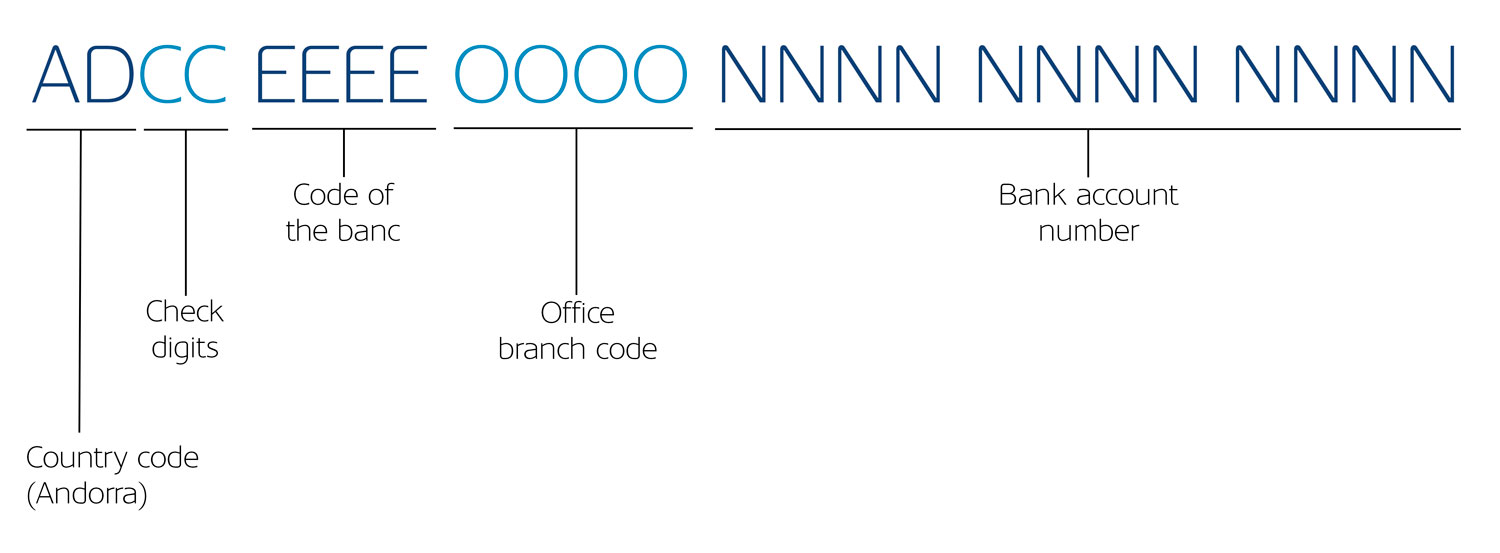The IBAN code: What is it and what is it used for?
MoraBanking | 08.23.2022 | Carlos Mendiola

An IBAN (or International Bank Account Number) is a unique code used for cross-border identification of bank accounts within the SEPA zone (Single Euro Payment Area) which includes the 27 Member States of the European Union plus Andorra, Vatican City, Iceland, Liechtenstein, Monaco, Norway, the United Kingdom, San Marino and Switzerland.
An IBAN contains information such as the country code, bank code, branch code and account number. It was created to streamline banking transactions and make them more secure, both domestically and internationally. Originally, each country had its own system for identifying bank accounts. The ISO 13616 standard, which allows for IBANs of varying lengths up to a maximum of 34 digits, including alphanumeric characters, was created to standardise the different systems.
Why was IBAN implemented?
The implementation of the IBAN system for banking has benefits for banks and their customers, the most important of which are:
- The risk of error is minimised by the check digits. When an incorrect IBAN is entered, in which the check digits do not match the account number, the bank is able to detect the mistake and notify the customer that the IBAN they entered is wrong.
- Faster processing, since it allows transfers to be sent from one account to another in a shorter period of time compared to the traditional method, regardless of where the two accounts are located.
Composition of an Andorran IBAN code
An Andorran IBAN code is made up of 24 characters with the following structure:

Where:
- The first four characters (ADCC) represent:
- The country code: in this case AD refers to Andorra (for Spain it would be ES; or FR for France).
- The bank’s check digits: in this case CC.
- The next four characters (EEEE) represent the code of the bank or financial institution.
- The next four characters (OOOO) indicate the office or branch code.
- The next twelve digits (NNNNNNN NNNNNN NNNNNN) represent the bank account number.
How do MoraBanc’s IBAN codes work?
Two examples of IBAN codes for a MoraBanc Group account are as follows:
AD71 0007 0039 0001 2345 6014
AD74 0007 0061 0000 1234 5054
If we take these two bank account numbers and break them down, we find the following information:
- The first four characters:
- AD71: indicate that the account is from Andorra (AD) and the check digits are 71.
- AD74: indicate that the account is from Andorra (AD) and the check digits are 74.
- The next four characters represent the code of the financial institution:
- 0007: is the code for MoraBanc Grup S.A.
- 0007: is the code for MoraBanc Grup S.A.
- The next four characters identify the branch office where the bank account was opened:
- 0039: refers to the MoraBanc branch in Encamp.
- 0061: refers to the MoraBanc branch in Ordino.
- The next twelve characters represent the bank account number:
- 0001 2345 6014
- The first three digits (000) are used to complete the 24 characters necessary for the IBAN code to be valid.
- The next six digits indicate the account number (1 2345 6).
- The next two digits (01) indicate the type of account, in this case a checking account.
- The last digit (4) is a control number of your bank account.
- 0000 1234 5054
- The first three digits (000) are used to complete the 24 characters necessary for the IBAN code to be valid.
- The next six digits indicate the account number (0 1234 5).
- The next two digits (05) indicate the type of account, in this case a savings account.
- The last digit (4) is a control number of your bank account.
- 0001 2345 6014
As you may have noticed, thanks to the IBAN code we can identify the country of origin of the bank account, the code which identifies the issuing institution, the code of the branch office where the account was opened and the complete account number, as well as several check digits to avoid problems when making transfers.
Where can I find my MoraBanc IBAN?
You can find your IBAN on:
- Your account statements and correspondence.
- Your checkbook.
- Online banking.
- The bank identification card that you can get at any branch.
And remember that when you want to transfer funds to an Andorran or foreign bank (within the SEPA zone) all you will need is the IBAN code and the full name of the beneficiary (individual or company) to whom the transfer is addressed.
If you want to pay an electricity or water bill by direct debit through MoraBanc, the utility company will always ask you for your IBAN code.
If for some reason you have to make a transfer outside the SEPA area, in addition to the full account number you will also need to know the destination country and the BIC/SWIFT code of the receiving bank.
The BIC (Bank Identifier Code) or SWIFT (Society for Worldwide Interbank Financial Telecommunication) code is an alphanumeric code of 8 or 11 digits that is used to identify a bank when making an international transfer outside the SEPA zone.
In case you didn’t know, MoraBanc’s BIC/SWIFT code is: BINAADADXXX.
Information on the processing of personal data
In compliance with Law 15/2003 of 18 December on protection of personal data, the customer authorizes that the applicant’s personal data entered on this form will be incorporated into files owned and managed by MORA BANC GRUP, SA – MORA BANC, SAU (hereafter referred to as “MoraBanc”) to process the requested service and, if necessary, to comply with the contracts finally entered into, and also to ensure correct operational procedures.
The applicant expressly authorises MoraBanc to send him/her commercial and promotional communications for products and services and information on the Bank itself, social or other activities, in hardcopy by post or by electronic means (among others, short messages (SMS) to mobile phones, e-mail, etc.). This consent can always be withdrawn, without retroactive effect.
The fact of filling out this form implies that the applicant acknowledges that the information and personal data provided are true, accurate and correct; otherwise, MoraBanc declines all responsibility for the lack of truthfulness or correctness of the data.
The applicant authorises the data provided to be communicated or shared with third parties forming part of the MoraBanc business group, entities which are primarily active in the financial, insurance and service sectors. The applicant is considered as having been informed of this transfer of information by means of this clause. The applicant accepts that he/she may be sent information on any product or service marketed by these companies.
The data processing manager is MoraBanc. The applicant is hereby informed that the rights of access, rectification, suppression or opposition may be exercised in the terms established in current legislation.



